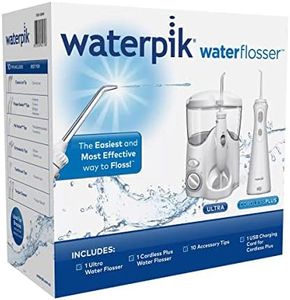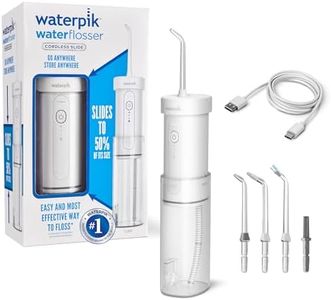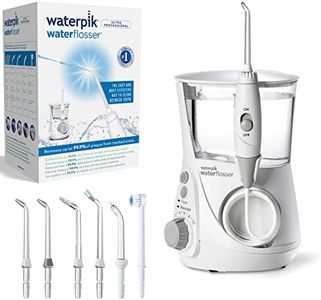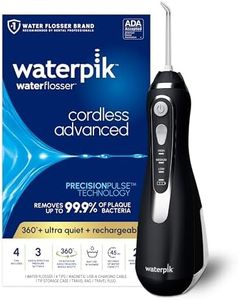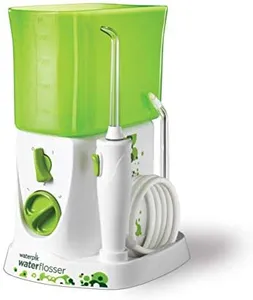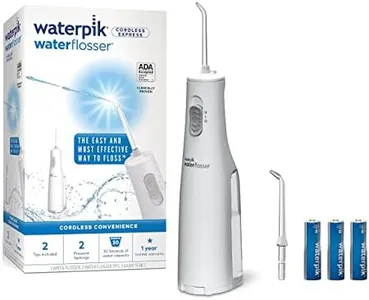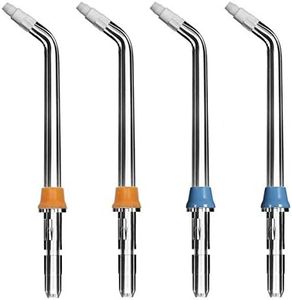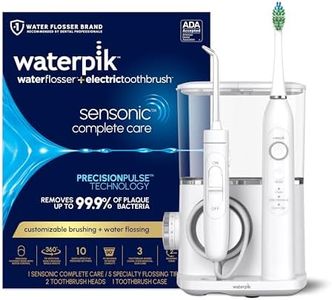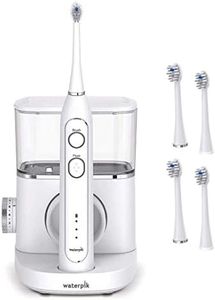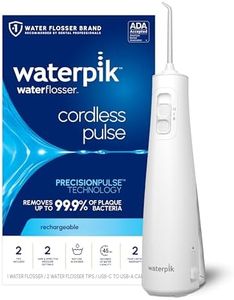We Use CookiesWe use cookies to enhance the security, performance,
functionality and for analytical and promotional activities. By continuing to browse this site you
are agreeing to our privacy policy
10 Best Waterpik For Braces
From leading brands and best sellers available on the web.By clicking on a link to a third party's website, log data is shared with that third party.
Buying Guide for the Best Waterpik For Braces
Choosing a water flosser (commonly referred to as a Waterpik, though that's just a popular brand name) when you have braces is a smart move. Traditional flossing can be tricky and time-consuming with orthodontic wires and brackets, so water flossers offer a much easier way to keep your teeth and gums clean. When shopping for one, it's important to focus on features that make cleaning around braces efficient, gentle, and convenient for regular use.Water Pressure RangeWater pressure measures how strong the stream of water is. This is important because different people and different areas of the mouth may need either a gentle touch (for sensitive gums) or more power (for stubborn debris around braces). Adjustable pressure settings are best: low pressure is good for sensitive areas or if you're new to water flossing, medium pressure suits general daily cleaning, and high pressure helps remove stuck debris for those comfortable with strong streams. People with sensitive gums, kids, or new orthodontic patients should start with lower settings, whereas those with tough food particles can try higher settings once they're used to the sensation.
Tip Variety and Orthodontic TipsWater flossers come with different nozzles or tips, and having the right type can make a big difference when you have braces. Look for models that include an orthodontic tip specifically designed for cleaning around brackets and wires; these tips often have a special brush or shape to better clean those tricky spots. If multiple users will share the flosser, check for extra tips in the box. Families with mixed orthodontic needs or anyone with fixed appliances especially benefit from specialized tips, while standard tips are fine for general cleaning.
Reservoir SizeThe reservoir is the tank that holds water. Its size matters because a larger one lets you floss your whole mouth in one session without needing to refill. Compact models may have smaller, travel-friendly tanks but require refilling for thorough cleaning. Choose a larger reservoir if you prioritize convenience and plan to use it at home, while a smaller one might suit travelers or anyone with limited counter space.
Ease of Use and ErgonomicsSince you’ll be using your water flosser daily, it needs to be comfortable to hold and simple to operate. Check for easy-to-grip handles and accessible controls, particularly if you have smaller hands or dexterity challenges. Cordless models offer flexibility for movement and are handy for travel, while countertop models may have more powerful motors but take up more space. If you'll mostly use it at home, countertop versions are fine, but for shared bathrooms, small sinks, or travel, consider cordless options.
Cleaning and MaintenanceRegular cleaning is key to keeping your water flosser safe and effective, and design features can make this easier or harder. Wide-mouth reservoirs are easier to clean, and removable parts help you access all areas. Consider how often you’re willing to clean; some people prefer simpler, fewer-part designs if they'll be less meticulous about maintenance, while others don’t mind a device with more parts if it offers more features. Choosing one that promises ‘easy clean’ or ‘dishwasher-safe’ components is especially helpful for busy households.

